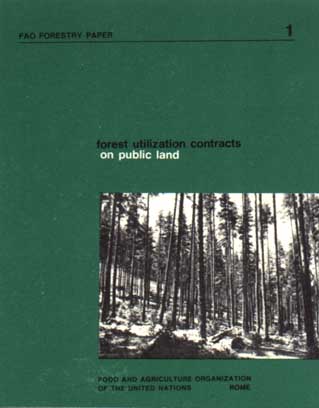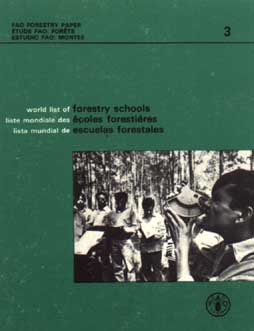An economic view of pastoralism that is not unkind
Man's hand on nature
The economics of pastoralism: a case study of sub-Saharan Africa, by Z.A. Konezacki. Frank Cass and Co. Ltd., London, 1978. 185 p., £9.50
Pastoralism has been little studied by economists; most of the literature on the subject deals with anthropology, natural science and the environment. Konezacki's book then, with its ease studies of sub-Saharan pastoral economics is a welcome contribution.
Pastoralism, says the author, is an economic activity in which man and herds of domestic animals live in a symbiotic relationship. It does not include large-scale commercial cattle ranching or the raising of small numbers of livestock on farm lands. Rather, in pastoralism, herding is the main form of subsistence, though it may be combined with crop production. There are several forms of pastoralism: nomadic, semi-nomadic, and transhumant (seasonal movement), for example - all discussed by Konezacki.
The book concentrates on rain-deficit zones (less than 500 mm annual rainfall) and in particular on the least developed countries in these zones. The grazing potential of the arid zones, according to Konezacki, is being either misused, for lack of a scientific approach, or not utilized owing to poor accessibility. And the importance of these facts, he points out, is that in the absence of alternatives for local employment, pastoralism provides most people in these areas with their livelihood.
Some of the features of sub-Saharan pastoralism treated in the book are (i) the harsh ecological conditions and consequent limited capacity of the land; (ii) the insignificant proportion of land under crops, most being under pastures, meadows, forests; (iii) livestock raising, as the main source of livelihood and as the basis of the economy; (iv) survival of age-old pastoral practices, such as maintaining large herds, and common ownership of grazing lands, which tend to become overgrazed; and (v) the generally insignificant amount of trade in livestock, pastoral economies being largely self-sufficient.
Konezacki stresses that the main problem facing pastoralists in the arid zones is adjustment of stock numbers to natural feed sources. Therefore, he says, there is need for the establishment of a stable equilibrium, both ecologically and economically, between human and livestock populations and the land. There is an interesting contrast drawn between a model of an "idealized" pastoral society-containing the basic conditions for achievement of equilibrium- and a "real-world" pastoral society. If the equilibrium necessary for the survival of pastoralism as a way of life and a method of production is to be achieved, Konezacki concludes, outside intervention is inevitable.
The book also deals with scientific management of the usually overused pastoral lands and with the problems of increasing herd sizes.
Konezacki has devoted one chapter to a case study of Somalia, concentrating on the economic aspects of nomadic pastoralism. Nearly two thirds of the country's population are nomads and they naturally have considerable impact on the economy. Economic planning from 1950 and the factors which led to a dramatic growth of livestock exports are reviewed. There is also a discussion of government action taken to deal with the recent drought.
There is an assessment of the drought in the Sahelian countries-Mauritania, Senegal, Mali, Upper Volta, Niger, Chad - which has attracted world attention. Particular attention is paid to the manmade interventions which permitted or caused the occurrence of widespread hunger and enormous losses in animal population, such as control of disease by vaccination and immunization leading to overstocking, extending watering facilities for animals through deep well-boring programmes resulting in the overgrazing of pastures within an increasingly widening area around them. The author rightly questions not the intentions which motivated these programmes, but the planners' understanding of the problems they were attempting to solve. There is a critical analysis of proposals offered, such as enforced settlement, to solve the fundamental problems of the regions.
The livestock sector on Botswana, whose population depends greatly on livestock raising, is also treated by Konezacki. He discusses the rapid growth of the livestock population and the consequent degradation of grazing lands, and he includes information on the Government's efforts to achieve scientifically controlled range management.
The book concludes with a review of approaches to the solution of the problems of sub-Saharan pastoralism. Konezacki points out that a scrutiny of' modern planning methods applied to pastoral sectors reveals persistent use of measures that unintentionally encourage animal hoarding. And the planners, he says, have neglected to implement measures that would improve range management, marketing, and land-tenure systems. Konezacki also contends that government attempts to resettle nomads produced disappointing results, and he adds that the money spent on these schemes could have been invested instead in improvement of pastoral methods of production.
Konezacki also proposes a series of pastoral reforms. They include (a) introduction of an insurance scheme for pastoral nomads which would protect against natural calamities; (b) reform of existing land-tenure systems; (c) implementation of policies to provide alternative possibilities for employment; (d) formation of farming cooperatives for small livestock owners; and (e) restriction of herd size. In short, Konezacki says, what is required is neither the maintenance nor the complete liquidation of' the status quo, but its modification.
P. ARGAL
Conservation and agriculture, edited by J.G. Hawkes. Gerald Duckworth and Co., London, 1978. 284 p., £14 (in UK).
This book concerns man's interaction with the natural environment and sets out ways to obtain a balance between environmental conservation and land use. The contributors are from a number of disciplines, including archaeology, ecology, forestry and geography.
The history of agricultural development is treated by several authors.
G.W. Dimbleby discusses within. a broad temporal and spatial context some of the major changes effected in the natural environment by the evolution of the forest from a place for hunting and gathering to a place for raising animals and crops. H. Thorpe presents a case study of interaction between the land and the people and traces environmental changes over three millennia within the shire of Warwick in the UK. D. Brothwell examines the influence of human populations on the survival, biology and health of many animal species, particularly those that have food value.
One section of the book deals with the threat to world genetic resources and ways to preserve them as essential materials for developing improved strains of domesticated plants and animals. The point of view here is that use or misuse of all resources, including genetic resources, is determined ultimately by political decisions; therefore, according to the authors, political action as well as scientific research is needed to protect genetic resources. Erna Bennett, a geneticist with the FAO Plants Division, discusses threats to crop-plant genetic resources and the need to conserve them. She observes that of the many species of plants only relatively few have been used by man and of these barely a score constitute man's major crops. Dr. O. Frankel's paper contains an excellent account of food crop genetic resources. He discusses exploration and conservation of genetic resources and their systematic e valuation as an essential for utilization, and includes descriptive documentation of collected material and information on the education and training of staff. J.L. Henson, dealing with rare farm animals in the UK, notes that some useful breeds have been lost and others are on the verge of extinction unless serious attempts are made to preserve them.
Focusing on forestry and forest resources, Dr. K.F.S. King, head of the International Council for Research in Agro-Forestry, Nairobi, and former Assistant Director-General in charge of Forestry at FAO, speaks of both the economic and environmental contributions of forests to development, particularly in third world countries. He stresses that it is possible to manage forests for both economic development and protective and recreational service. He points out that forest exploitation and management may, however, threaten some species and eventually alter the pattern of competition in the forests. Therefore, King says, efforts should be made to preserve endangered species and to maintain representative areas of plant formations and ecosystems throughout the world.
In discussing the present genetic resources of forest trees, R.H. Kemp and J. Burley report that relatively few species are in danger of extinction, a point of view- many conservationists may dispute. They express concern, however, about extensive destruction of forests in many parts of the world, particularly in tropical regions, which may lead to the extinction of species of unknown value. The authors believe that of the species already known to be of value for use in highly productive plantation forestry, few have been explored adequately and that there is danger that valuable provenances of such species may disappear even before they can be evaluated and utilized.
The book also contains a section on food production in India. Here M.S. Gill gives a lucid accout of the success achieved in increasing wheat production in the irrigated areas of northwest India (Punjab). J.C. Harris reports on the progress made in increasing rice production in the southern state of Tamil Nadu, and J.B. Hutchinson evaluates the Indian achievement in food production as a whole.
The balance between food production and conservation is also examined in this book. M.W. Holdgate discusses this balance as a component of land management. A decision on the correct use of a land area, he says, includes consideration of its instrinsic environmental properties, including the socioeconomic conditions of the communities living there.
Very well produced, this volume will be of value of those who have responsibilities to protect the environment as well as to lay readers.
P. ARGAL
among the FAO technical papers . . .
a continuously expanding list of studies dealing with specific problems of forestry. Many of these papers are available in all three languages - English, French and Spanish. All are available, on payment of handling charges, from the Distribution and Sales Section FAO, Via delle Terme di Caracalla, 00100, Rome; or through l the authorized sales agents and booksellers listed on the inside back cover.


